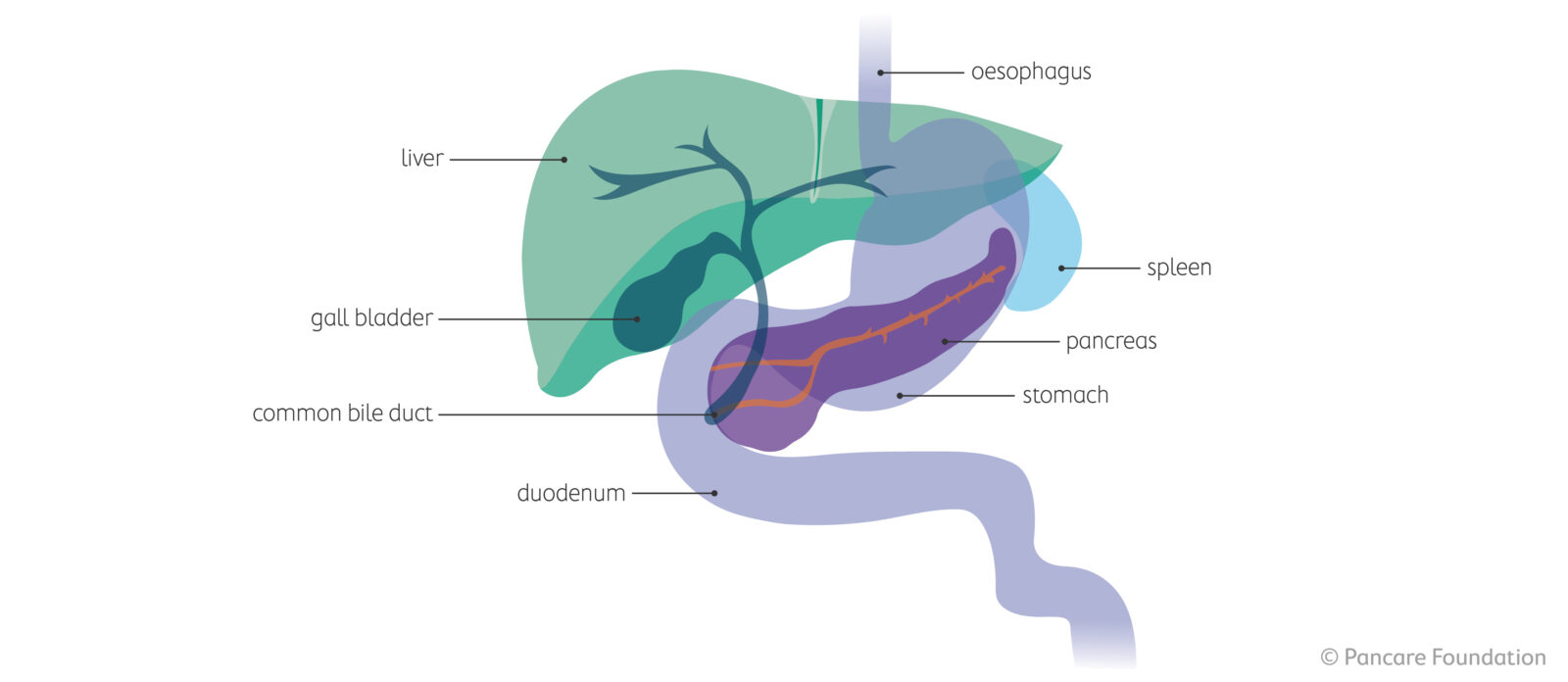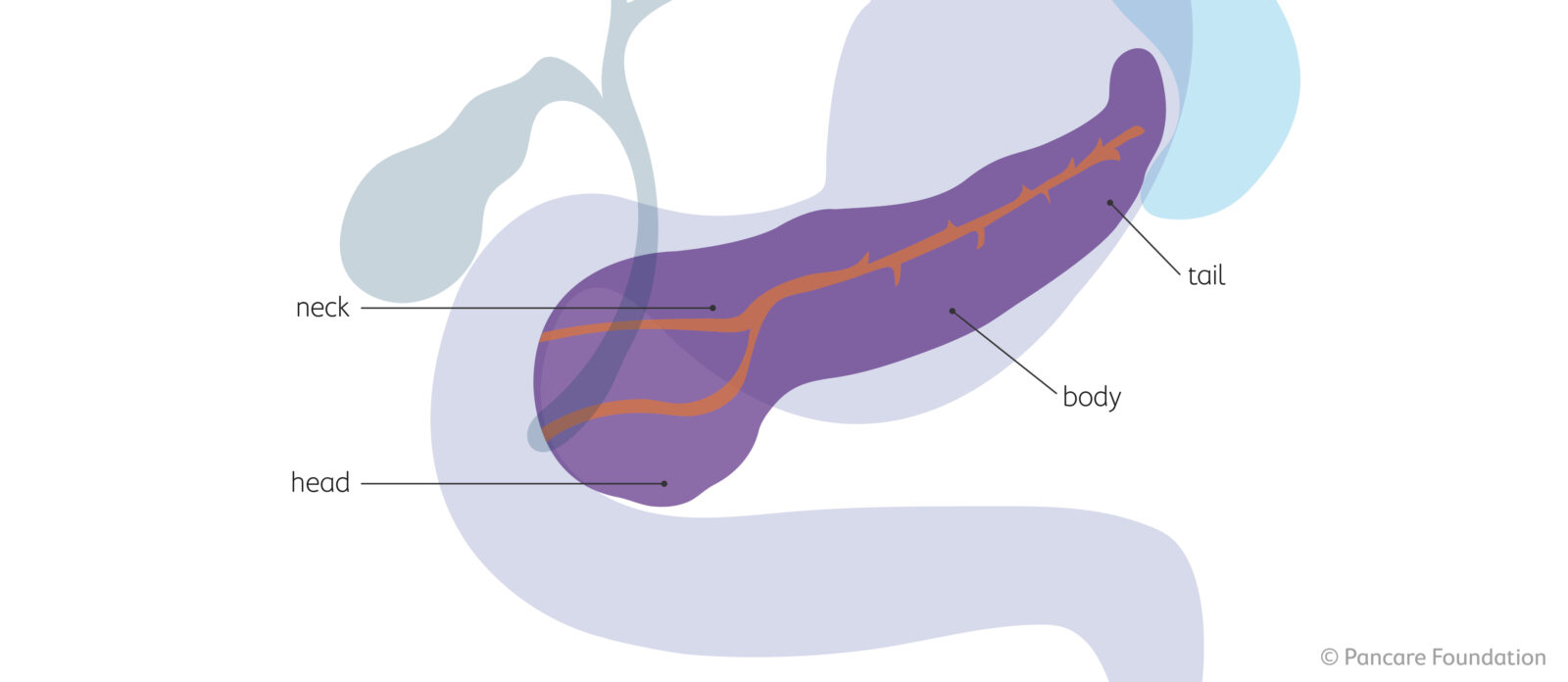What is pancreatic cancer?
Pancreatic cancer occurs when abnormal cells in the pancreas grow out of control. Several types of growths (or “tumours”) can occur in the pancreas. Some of these growths may be cancerous, while others may be non-cancerous. Cancerous tumours can occur on any part of the pancreas, including the head, body or tail of the organ.
Pancreatic cancers are classified by doctors into two main types – exocrine and endocrine tumours.
- Exocrine tumours start in the exocrine cells, which make enzymes to help digestion. The vast majority (95%) of pancreatic cancers are classified as pancreatic exocrine cancer or pancreatic ductal adenocarcinoma (sometimes called “PDAC” for short), which most commonly begin in the cells that line the ducts of the pancreas.
- Endocrine tumours (also called neuroendocrine tumours) start in the hormone-producing cells and account for only 5% of all pancreatic cancers.
The symptoms produced by pancreatic cancer vary according to the location of the tumours and the tumour type. Exocrine tumours such as PDAC are aggressive and difficult cancers to treat, and generally have a far worse prognosis (likely outcome) than pancreatic neuroendocrine tumours.
A range of tests and scans are available to diagnose pancreatic cancer.
About the pancreas
The pancreas is a large gland that lies behind the stomach in the back of the abdomen. It is about 15cm (6 inches) long and shaped a bit like a tadpole. It is often described as having a head, body and tail.
The upper gastrointestinal organs

The pancreas

The pancreas is surrounded by several large and important organs and blood vessels. The head of the pancreas is closely attached to the duodenum (the top part of the small intestine). The pancreatic duct empties into the duodenum. The common bile duct that carries the bile from the liver also passes through the head of the pancreas to empty in the duodenum. The large blood vessels that carry blood to the liver, intestines, kidneys and lower part of the body can all be in contact with the pancreas.
What does the pancreas do?
The pancreas has several important functions.
- It produces enzymes (protein substances produced that increase rates of reactions) that are secreted in the pancreatic digestive juices which help break down food so the body can absorb nutrients. These digestive juices flow down a tube called the pancreatic duct, which runs the length of the pancreas.
- It produces hormones (chemical messengers) that enter the body and flow through the bloodstream. The most important of these hormones is insulin, which helps to regulate the amount of sugar in the blood.
If the pancreas isn’t working properly, then these functions can be affected.
Read more:
> Pancreatic cancer symptoms and risk factors






